BAG Moulding Process - Prof. Supriya PDF

| Title | BAG Moulding Process - Prof. Supriya |
|---|---|
| Course | Composite Materials |
| Institution | PES University |
| Pages | 3 |
| File Size | 306.9 KB |
| File Type | |
| Total Downloads | 32 |
| Total Views | 163 |
Summary
Prof. Supriya...
Description
• •
• • • •
•
•
BAG MOULDING PROCESS (PREPREG LAY-UP PROCESS) This is a closed mould process and is adopted to make composites where high reinforcement to resin ratio is required. Also certain composite systems like carbon fiber, boron fiber and silica fiber reinforcements in high molecular polymer resin will require better compaction and continuous removal of entrapped air and volatile substances. This process also provides smooth and textured finishes on all sides and is better suited for automation. Basically Bag Moulding comprises of three different methods as under: Vacuum Bag moulding Pressure Bag moulding Autoclave moulding If only Vacuum is used with atmospheric pressure, the technique is called Vacuum Bag Moulding. If air at room temperature is used to pressurise then the technique is referred to as Pressure Bag Moulding. If hot gases are used in closed chamber, then the technique is called as Autoclave Bag Moulding. The details of stacking sequence of Plies and sealing arrangement is indicated in the following sketch.
Bags are thin and flexible membranes made of cellophane or poly vinyl crylate films or Silicone rubber sheets. The main purpose of the Bag is to separate the laminate lay up from pressurizing gases or atmospheric contamination. The desirable characteristics of the Bag material are as follows: • Sufficient flow to conform to complex shapes • Capability to squeeze the resin on the reinforcement to increase the wettability • Sufficient softness to comply with sealing requirements • Durability to withstand repeated exposures to temperatures as high as 175C without loss of strength and stiffness • Capability for repair • Dimensional stability BAG MOULDING TECHNIQUE
•
• •
• •
•
One of the oldest and versatile process for consolidating pre-impregnated laminates (prepegs). The prepegs are cut to suitable size & shape, laid up on a mould, covered by a flexible diaphragm, cured under high pressure and temperature Bagging technique requires considerable skill on the part of the worker to produce high quality finished product Bag moulding can be divided into 3 categories: • Vacuum Bag • Pressure Bag • Autoclave Vacuum bag moulding requires simple instruments and handles large parts and complex shapes Pressure bag and Autoclave are preferred for curing at higher pressures and temperatures and for higher level of consolidation . E.g. Helicopter blades, Helicopter rotor shafts, Instrument panels for Aircrafts, Airelons, Truss members for Satellites etc Pressures up to 640 MPa and Temperatures up to 200°C can be achieved in Autoclave. Heated air or steam is used for pressurization.
• •
Salient features Complicated shapes with very high fiber volume fractions can be manufactured using this process. It is an open molding process with low-volume capability. In this process, prepregs are cut, laid down in the desired fiber orientation on a tool, and then vacuum bagged. After vacuum bagging, the composite with the mold is put inside an oven or autoclave and then heat and pressure are applied for curing and consolidation of the part The prepreg lay-up or autoclave process is very labor intensive. Labor costs are 50 to 100 times greater than filament winding, pultrusion, and other high-volume processes; however, for building prototype parts and small quantity runs, the prepreg lay-up process provides advantages over other processes....
Similar Free PDFs

Rule of mixtures - Prof. Supriya
- 2 Pages
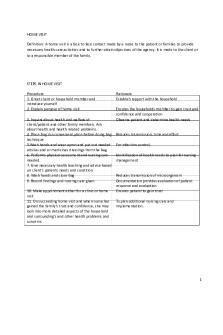
BAG- Technique - RLE Bag
- 7 Pages

JENIS-JENIS MOULDING
- 10 Pages
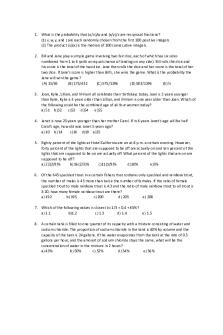
Mixed Bag
- 4 Pages
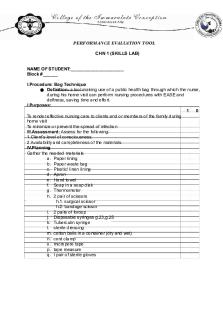
Bag technique checklist
- 3 Pages

INB301 Sonali Bag Report
- 12 Pages

Ecomy Enterprise - ECO-BAG
- 10 Pages

Bag It movie questions
- 2 Pages

Business Plan Tote Bag
- 7 Pages
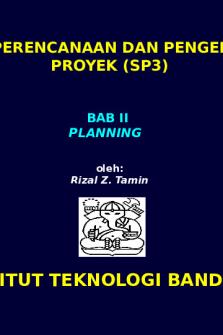
mekanika rekayasa konstruksi bag 2
- 33 Pages
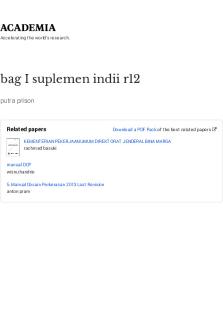
bag I suplemen indii r12
- 55 Pages
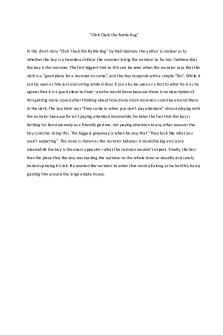
Click Clack the Rattle Bag
- 1 Pages

In My Bag Speech Outline
- 1 Pages
Popular Institutions
- Tinajero National High School - Annex
- Politeknik Caltex Riau
- Yokohama City University
- SGT University
- University of Al-Qadisiyah
- Divine Word College of Vigan
- Techniek College Rotterdam
- Universidade de Santiago
- Universiti Teknologi MARA Cawangan Johor Kampus Pasir Gudang
- Poltekkes Kemenkes Yogyakarta
- Baguio City National High School
- Colegio san marcos
- preparatoria uno
- Centro de Bachillerato Tecnológico Industrial y de Servicios No. 107
- Dalian Maritime University
- Quang Trung Secondary School
- Colegio Tecnológico en Informática
- Corporación Regional de Educación Superior
- Grupo CEDVA
- Dar Al Uloom University
- Centro de Estudios Preuniversitarios de la Universidad Nacional de Ingeniería
- 上智大学
- Aakash International School, Nuna Majara
- San Felipe Neri Catholic School
- Kang Chiao International School - New Taipei City
- Misamis Occidental National High School
- Institución Educativa Escuela Normal Juan Ladrilleros
- Kolehiyo ng Pantukan
- Batanes State College
- Instituto Continental
- Sekolah Menengah Kejuruan Kesehatan Kaltara (Tarakan)
- Colegio de La Inmaculada Concepcion - Cebu


